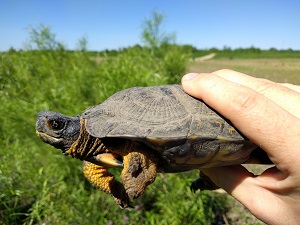
The Vermont Fish and Wildlife Department says keeping native turtles as pets is prohibited because it can harm the turtle and pose threats to wild turtle populations.
“Capturing a wild turtle and keeping it as a pet, even if only for a short time, is not only bad for that individual turtle but it could be detrimental to the entire turtle population as well,” said Vermont Fish and Wildlife herpetologist Luke Groff. “Releasing captured turtles back into the wild could introduce wildlife diseases into the population or disrupt population genetics if released into a new population. Adult turtles usually have well-defined home ranges, so releasing a turtle in unfamiliar habitat may result in its slow death since it won’t know where to find food or take shelter.”
“Turtles are slow to develop, especially those living at northern latitudes where the growing season is short. Many of Vermont’s turtle species do not reproduce until they are at least 10 years of age. Older, sexually mature females are critically important to the long-term persistence of some Vermont turtle populations. The loss of even a couple mature females from a population may have serious consequences.”
Some common species you are likely to see include the Painted Turtle, Snapping Turtle, and Northern Map Turtle. The Wood Turtle, Spotted Turtle, and Spiny Softshell are rare in Vermont, and the Vermont Fish and Wildlife Department urges you to report sightings of these species. If you see some of Vermont’s native turtles in the wild, feel free to take a photo home with you, but leave the turtles in the wild.
For more information on Vermont’s native turtle species, visit www.vtfishandwildlife.com or contact Vermont Fish and Wildlife herpetologist Luke Groff at Luke.Groff@vermont.gov.
For Immediate Release: May 20, 2021
Media Contacts: Luke Groff 802-760-0089, Mark Scott 802-777-4217
